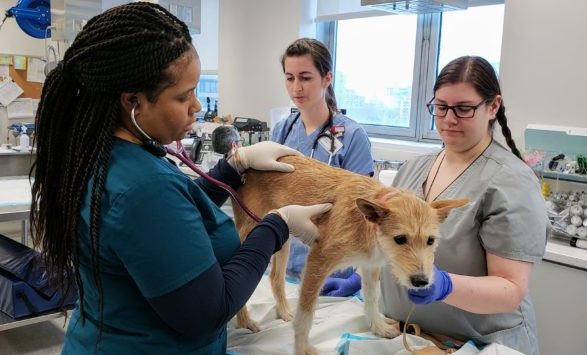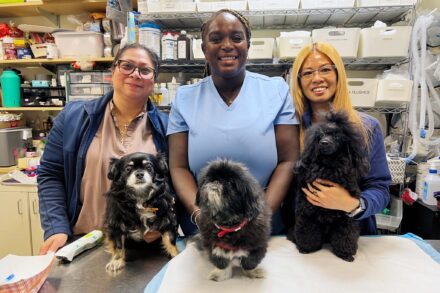Soft Tissue Sarcomas in Dogs
Background
Soft tissue sarcoma (STS) is a collective name for a group of malignant (cancerous) tumors which typically arise from tissue under the skin. Though these tumors can occur anywhere, they most frequently arise on the limbs or anywhere on the outside of the dog’s body. Types of STSs include fibrosarcomas, perivascular wall tumors (previously called hemangiopericytoma), and peripheral nerve sheath tumors. Affected dogs are typically 10 years of age or older.
Soft tissue sarcomas can metastasize (spread) to nearby lymph nodes and the lungs. A thorough evaluation is necessary and includes blood work, chest x-rays, a biopsy or an aspiration or the mass, lymph node assessment, abdominal ultrasound, and possible a CT scan.
Signs
- A mass that grows gradually or quickly over weeks, months, or even years
- A mass that has been present for a while then abruptly or rapidly grows
- The mass may feel like it is on top of the skin or underneath the skin. It can be hard or soft to the touch
- The mass could be ulcerated or ooze
- If the mass is in limb region, lameness may develop
- Less likely, a dog may exhibit weight loss, lethargy, and/or inappetence if the growth is taking a toll on their body
Treatment
Treatment options often depend on the size, location, and biopsy of the tumor. Surgery is often the mainstay of treatment to remove the tumor. The best chance to remove the tumor is the first surgery. If tumor cells are left behind, the tumor may recur.
After surgery, radiation therapy can be used to target these remaining cancer cells, often yielding a very good prognosis.
Before surgery, radiation can also be used to reduce the size of the cancer before removing it.
On occasion, chemotherapy may be recommended with surgery or radiation for tumors with a high risk of spreading throughout the body. Chemotherapy can also be used on its own in an attempt to slow the tumor’s growth.
Radiation therapy can be performed in 3, 6, 10, or 18 treatments, depending on the amount of tumor present, any other medical conditions of the pet, and the goals of therapy. Treatment is typically given 3-5 times per week though at times it can be done once a week for 6 weeks. For each treatment, your pet will need to be anesthetized to ensure the utmost accuracy in treating the cancer site.
Radiation Side Effects
It is the goal of the radiation therapy team to minimize the side effects as much as possible. Unfortunately, there is always a risk of side effects with any medical treatment. Side effects occur only in the area that is receiving radiation.
- Acute Effects – these typically occur within the first few weeks of treatment up to a few weeks after radiation has been completed. Signs can include pink/red or moist skin or fur loss.
- Late Effects – these can occur months to years after radiation and can include no fur in the RT area, white fur regrowth, skin discoloration, dry/thin skin, scar tissue, lymphedema, or lysis of the bone or fractures. While many patients will experience changes to their fur, they rarely will experience other late effects.
Prognosis
Prognosis with radiation therapy will depend on the extent of the cancer, the goal of radiation, and the presence of other diseases. Many dogs will do well for a year or for many years!
Make an Appointment

Oncology
AMC's Cancer Institute is a revolutionary medical center, created to provide integrative and comprehensive care for pets diagnosed with cancer.
Learn More





























